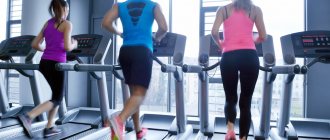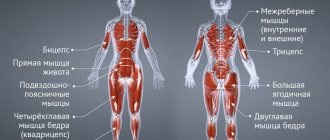- How to breathe correctly while running
- What is running pace
- When is the best time to run?
A big plus of running is its apparent simplicity and accessibility. No trainer, equipment or gym membership required. He went outside and ran. This is partly true. But at the same time, running can harm someone in some way. And definitely for all people - it can be made more effective than it is now. All important aspects of running are covered in the most detailed guide possible.
Motivation to run
Have you decided again that you will start running next Monday? First you need to understand why you need this. Otherwise, you can quickly stop, losing motivation. Sometimes before you even get started.
Most people run simply “for health”. Many people want to lose weight. Some are preparing for some kind of race, because running has been popular lately.
But each goal determines its own optimal ways to achieve it.
Health Benefits of Running
There are many studies on the benefits of cardio in general and running in particular. Summarizing their findings, we summarize:
- Improvement of the cardiovascular system.
Considering the large number of diseases of the cardiovascular system, running is an important and good prevention. You increase the tone of the heart muscle.
- Improvement of the nervous system.
You can overcome depression and balance your nervous system. Often after running, your mood improves due to the release of catecholamines, and subsequently your performance. If not, perhaps you are doing something wrong. :)
- Strengthening the body as a whole, improving physical fitness.
Running improves immunity, allows you to be more alert, and affects the restructuring of the hormonal sphere. Blood circulation improves and oxygen flows to tissues. Running has a positive effect on the formation and renewal of cells, tissues, and muscle structures.
- To prolong quality of life.
All the points above have a comprehensive impact on your longevity and quality of life. According to coach Alexey Nemtsov, 1 hour of running per week at an average heart rate is very good for the heart. This prolongs the work of the heart, for which you will thank yourself closer to retirement.
- Other bonuses.
They usually run outside, in parks, and being in the fresh air is beneficial. It is also a form of hardening, in any weather. And for some, running is actually a form of meditation.
Run to lose weight
Running is not the best way to lose weight. The main role in weight loss is played by nutrition and calorie deficit: you need to eat less than you burn. Physical activity has only an auxiliary effect.
Moreover, strength training has no worse effect on fat burning than cardio. Therefore, if you want to lose weight, organize your nutrition. Cardio and strength training programs will be important but incremental steps.
Running and gaining muscle mass
If you want to gain muscle mass, running may not be necessary at all. There is a lot of debate about whether running is necessary for gaining muscle. It’s not for nothing that there are so many jokes about muscle builders and cardio.
Jocks think that cardio is some kind of Spaniard.
And even those who think that running is necessary argue: we need short or long runs, intervals or even running. To avoid arguing, let's focus on three basic facts:
- Yes, perhaps running prevents muscle growth and hypertrophy.
- The shorter and calmer the run, the less unpleasant this impact is for bodybuilders.
- Either way, running has many positive effects. And the benefits from them exceed the possible weight loss even for “jocks”.
Running technique
Running seems very easy. We all somehow run from childhood; it is as natural as possible for us, just like walking.
Phoebe from Friends is always as natural as possible
All running technique is needed not to complicate the process, but to make it more effective. To save your energy and minimize injuries. Therefore, we will give below the main points about the position of all parts of the body during running.
- Correct running is a constant fall forward.
You need to tilt your body, start falling and place your foot exactly under the center of gravity of the body. This is how energy savings are achieved.
Illustration from the book “Run Faster, Longer and Without Injury”
It is as simple as possible to understand and work it out this way. Stand at the door frame, place both hands on its edges and lean 5-7 degrees. Now let go of your hands. You will start to fall - and in order not to fall, put your foot on it. And continue moving further without changing the angle of your body.
No need to jump up and down. You simply alternately place your legs under the “falling” body.
- Frame:
- motionless;
- no need to straighten up, tilting your body back;
- no need to tilt the body forward (in addition to tilting along the axis of the entire body);
- no need to swing left and right, this reduces the efficiency of running;
- the core muscles (the complex of muscles responsible for stabilizing the pelvis, hips and spine) are tense.
- Legs:
- bring before oneself;
- bend at the knee at a right angle;
- do not allow the leg to be straight (after all, then the blow from the knee joint is transmitted by the impulse higher, right up to the head);
- Don't wiggle your hips.
- Foot:
- when touching the ground, the foot is under the center of gravity of the body, and not in front or to the side;
- It is better to step on the toe rather than the heel;
- The outer edge is turned slightly downwards, and the big toe is turned up accordingly.
There is a lot of debate among experts about whether running with the foot on the heel is harmful. Let’s not be categorical, but note that there are still many more opinions about harm.
You need to step on your toes, because then the foot absorbs shock loads. And when you step with your heel, you simply stick into the ground. Plus you seem to be slowing yourself down.
Foot placement technique
Alas, many beginners run on their heels and roll onto their toes. Thanks to special running shoes, the negative impact of this can be partially mitigated, especially if you run slowly and smoothly. But over time, this can lead to discomfort and injury. Therefore, it is better to relearn a more correct and natural way for humans.
Nikolai Romanov and Kurt Brungardt in their book “Run Faster, Longer and Without Injury” suggest running barefoot. Stepping on your heel, you will immediately understand how painful it is and how dangerous it is.
- Shoulders:
- do not slouch, do not squeeze your shoulders;
- straighten your shoulders, this will allow your lungs to open and it will be easier to breathe;
- at the same time, do not raise your shoulders, and if your shoulders rise, shake off your hands and straighten your shoulders.
- Hands:
- move along the body, as close to the body as possible;
- moving the arms back and forth rather than sideways, which would increase unnecessary swinging;
- arms are bent at a right angle at the elbow;
- when moving the arm forward, the hand rises slightly above the solar plexus, and when moving the arm back, the hand does not fall below the waist;
- in this case, the hands do not intersect the central axis of the body;
- forearms are not tense;
- the hand is relaxed, the fist is free and inelastic, the thumb is pointing upward (the elbows will automatically move correctly);
- The faster you run, the more important your arm work is (in sprinting, effective arm work is very important).
- Sight:
- look straight, parallel to the ground;
- you can lower your eyes, but not your head;
- To avoid swaying, you can follow the horizon line.
Incorrect and correct running technique
Useful tips for beginners
Water
You need to drink clean water immediately after waking up and 30 minutes after finishing your workout. The body must always maintain the required level of fluid. The daily volume of water for an adult is from 1.5 to 2 liters.
Music or useful information
Take a player and recordings of your favorite music or useful lectures for a run. Thus, running in the morning allows you to combine business with pleasure. It is believed that while running a person concentrates and information is perceived better.
Heart rate monitor
Be sure to buy a heart rate monitor - a device with which you can monitor your well-being during training. According to statistics, the main reason why people quit running is that the load is too high for their body to handle. The heart rate monitor will allow you to adjust the level of stress and train for pleasure, and not for wear and tear. Read this article about how to choose a heart rate monitor.
Running technique and pace
Beginners are advised to run at a comfortable pace. However, not all experts agree with this statement. The fact is that proper running requires adherence to a certain technique. If you start training without following this technique, it will be difficult to relearn. Key points that deserve close attention:
- you don’t need to stand on your heel with all your might; use your entire foot while running;
- the landing should be as soft as possible, first on the widest part of the foot (front), then followed by a smooth roll to the heel;
- do not make sudden movements, correct running is smooth, without stomping or hitting;
- do not raise your shoulders, lower them and relax, watch your posture and tense your abdominal muscles;
- Bend your elbows at a right angle, relax your hands;
- take frequent and short steps;
- the gaze is directed forward.
Breathing and pulse
How to breathe correctly while running
There is no consensus here. There is generally a version that you need to breathe as comfortably as possible: the body will adjust itself.
But more often recommendations are given for specific breathing methods. They do not contradict, but complement each other:
- Rhythmic breathing.
It is usually recommended to inhale for 2 steps and exhale for 1. If this is so difficult, you can try a ratio of 5:2 or 4:1. It is important to stay longer in the inhalation phase, when the body is as stable as possible. This reduces muscle fatigue.
- Deep breathing.
You need to exhale as much as possible to completely remove carbon dioxide from the body.
- Diaphragmatic breathing.
This is when the stomach inflates when you inhale, and deflates when you exhale. This will create more oxygen. In principle, diaphragmatic breathing is always useful, not only when running, but also in life.
- Breathing through the nose.
Opponents of this say that such breath is usually not enough anyway. Especially if there is a curvature of the nasal septum. But in cold weather this is really important, as the air warms up more. You can also press the tip of your tongue to the roof of your mouth, this will create an additional barrier to warming the air.
That is, ideally you need to breathe: deeply, rhythmically and through the diaphragm, preferably through your nose. :)
In any case, if you decide to start running, it is better to first focus on running technique and heart rate, and then move on to breathing issues.
Heart rate while running
If you are not an athlete and run for yourself, then cardio training should take place in the heart rate range from 60% to 80% of the maximum.
The simplest, classic way to determine maximum heart rate: 220 minus age. That is, if you are 35 years old, then your maximum heart rate is 185 beats per minute. 60-80% for an average person 30-40 years old is 110-150 beats per minute.
Pulse zones by age
Typically, a heart rate of 120-130 beats per minute is considered optimal for endurance training for most runners. For complete beginners in running, it is better to focus on the lower values of the range for their age, that is, no more than 110-120 beats per minute.
Training below this range will not bring noticeable benefits, and above this range it can cause harm. And if the pulse increases more, you need to temporarily switch to a walk, even if you have the strength to continue running. By restraining yourself now, you simultaneously reduce the risks to your heart and lay the right foundation for the growth of your fitness.
There is also Karvonen's formula for determining the pulse based on the intensity value. But it is more relevant for more experienced runners.
General endurance is trained at a heart rate of 120-130 beats per minute.
You can measure your heart rate while running with heart rate monitors. At the same time, chest heart rate monitors are much more accurate than wrist monitors.
Is it bad to run in the morning?
There are also negative opinions regarding whether running in the morning is beneficial. If we talk about its opponents, then as an argument against morning running they cite the fact that the body is not yet prepared for active loads in the morning. Immediately after waking up, all processes have not yet started, and the body does not work at full capacity. During this period, he needs to adapt to new conditions and begin to produce energy for running in an increased volume. This can be very stressful and can negatively affect your heart function. Therefore, it is recommended to run not immediately after you wake up, but after some time, so that all internal processes return to normal and prepare. If you're a night owl and find it incredibly difficult to get up in the morning, you might be better off running in the evening.{banner_st-d-2}
In addition, running can have a negative impact if you choose the wrong place to run. Try not to run near chemical plants, industries, and factories that emit toxic waste. Then running may not only not strengthen the body, but even provoke various diseases. But you can and should run in environmentally friendly areas: parks, squares, forests, the sea coast - you will get both benefits and pleasure.
When considering the benefits and harms of morning jogging, keep in mind that there are those for whom running is, in principle, contraindicated. These are people with diseases of the joints, musculoskeletal system, lower back injuries, serious visual impairment, problems with the heart and respiratory system, and high blood pressure. Some contraindications are absolute, some are relative, so if you have any doubts, it is recommended to consult a doctor.
How to choose your running pace
What is running pace
For each person and his physical condition, his own running pace is optimal. Running pace is measured in minutes per kilometer. This is the inverse of your average running speed (km/h).
Running tempo is more convenient to use in practice than speed. It is easy to determine by the current indicators of completing the distance. If you ran 2 km in 12 minutes, then your running pace is 6 min/km. It is also easy to predict the final result: if you run another 3 km, then if you maintain the pace, you will run the entire 5 km in 30 minutes.
You can monitor your pace using only a watch (if you are running around a stadium or other marked distance), or using special gadgets - fitness trackers, fitness bracelets, sports watches, applications on your phone.
Step length
How fast you run is determined by your stride length and cadence. The length of a step is different for each person, and depends not only on his height and body structure. Simplified, step length is often determined by the formula: Height x 0.65.
This is for running at a medium pace. For a sprint, the stride will be longer, and for a marathon, it will be shorter.
Cadence
But a much more important concept is “cadence” - the number of steps per minute. To increase running speed, it is cadence that is important.
Many beginners take long strides at a low cadence. But you need to do the opposite: focus on how often you take steps, not how long.
A cadence of 180 steps per minute is considered “classic”. Ordinary running enthusiasts should strive for it. Usually they have a cadence of 160-170 or less. You need to increase your cadence gradually, little by little.
Another argument in favor of high cadence: experts believe that this significantly reduces the risk of injury. Since less time spent in the air means less stress on the knees and hips.
The following will help you measure your cadence while running:
- sports watches or bracelets with this function;
- metronome apps on your phone;
- music with a certain tempo (beats per minute - bpm).
The increase in cadence is directly affected by reducing the contact of the foot with the ground. In 2012, there was a study of the US track and field team before the Olympics. And the result was better not for the athlete with the highest cadence of all, but for the one who had the shortest time of contact of the foot with the ground. That is, he lifted his feet off the ground very quickly.
To achieve this, they give the following advice: run as if on coals.
Why you need to keep a steady pace
When running, like any other exercise, the body produces lactate - by-products of carbohydrate metabolism. When you run at your optimal pace, lactate concentrations remain at normal levels.
That is, you can run slower, but then you will not get a noticeable training effect. And if you run faster, you will quickly become exhausted, and you will run the next part of the distance slower than you could. As a result, you will finish the race with worse times or drop out altogether.
This happens because from a certain point, when the load increases, the body cannot cope, does not have time to remove lactate, and it accumulates. The load on the muscles is too great, they become acidic. Because of this, performance decreases and it becomes harder to run.
This point is called the anaerobic threshold (anaerobic metabolic threshold, ANTH). The values of the anaerobic threshold, like the pulse, are individual for everyone. But with training you can increase your anaerobic threshold.
The key to successfully completing the distance is a uniform pace.
ANNO can be determined quite accurately. At sports laboratories, you can undergo special testing with a gas analyzer and a blood test for lactate levels. Additionally, other important indicators for the runner will be determined - for example, maximum oxygen consumption (VO2 max).
If you have difficulty running and have pain in your side, this indicates a spasm of the diaphragm muscle due to lack of air. You've taken the pace too fast, you need to run slower.
How to start running correctly for beginners
It is important to choose the right amount, duration and intensity of your running training.
- Quantity – no more than 3 times a week.
You don't need to run every day. Even professional athletes don't do this. For beginners, 2-3 times a week is enough. Of course, not on consecutive days.
- Duration – run from 20 minutes to 1 hour.
Some experts recommend doing cardio for at least 30 minutes for the workout to have any effect. Others write that 10-15 minutes is enough.
There is an opinion about 20 minutes, and since it is just average, we recommend it. This time includes transitions to a step if you need it to lower your heart rate.
But gradually increase your training time to 40-60 minutes. Gradually means adding 2-5 minutes to the next workout. When you reach 1 hour (or less, if it’s hard), you can start jogging again from 20 minutes, but at a slightly faster pace.
If you want to lose weight, the duration of the workout is even more important. To do this, it is better to run slowly for 1 hour than to run relatively quickly for 20 minutes. And the muscles do not immediately begin to burn while running.
- The intensity, that is, the speed, is comfortable for you.
So that it is not easy, but also not difficult. The following recommendation is often given: it should be comfortable to speak when running. To put it hard, you took the pace too fast for yourself. That is, ideally, you should try to run on the edge, when you are still comfortable, but if you accelerate a little, you are no longer comfortable.
We wrote above about the pulse - 110-130 beats per minute.
If it's hard, don't hesitate to take a step. For some beginners, such transitions are more likely the norm if the pulse leaves the desired pulse zone. Or initially you need to run slower.
Slow down if you feel short of breath. Don’t allow yourself to feel like you have a pain in your side or want to fall to the ground. It won't do any good.
When running at an inappropriate pace and a heart rate higher than what is suitable for you, the cardiovascular system cannot cope with such a load, which carries its own risks for the body. Such prolonged exercise at a high heart rate no longer brings benefit, but harm. Especially for unprepared beginners.
Therefore, it is important to run at a low heart rate for the first time. This will provide the necessary adaptation for the heart, optimizing the work of the myocardium. Stroke volume will increase and heart rate will decrease.
The essence of the benefits and training effect of running is that you build on your current capabilities - and gradually, smoothly and constantly increase them.
The most important rule is to increase the load gradually.
It can be helpful to start keeping a workout diary. Note the date, distance, pace.
You can join group training. There are not only paid groups, but also free or paid ones. At a minimum, communicating with like-minded people will add motivation to beginners.
But there is not much attention to each student there. Therefore, if you want to learn the correct running technique, it is better to take several individual training sessions from a good trainer. He will explain the basics, what to pay attention to, and create a training program. And you will continue to study on your own. In the end it will be better quality and cheaper than running in a group.
On Saturdays, free parkrun races are held in many parks in Moscow and St. Petersburg.
As a runner grows in experience, the number, duration and intensity of workouts increases. But it’s still better to do no more than 4 workouts per week.
Ways to diversify your loads:
- Do interval training.
This is when you alternate between running and resting. You can do both sprints and jogs for several minutes. Rest should be no less than running time.
- Use ascents and descents.
Well suited for uniform load on all muscle groups.
- Use weights (belt, backpack, or on wrists and legs).
You should also definitely add strength training. This will allow you to run better and more efficiently, and will also reduce the risk of running injuries. Not to mention other positive effects not related to running.
In general, it is important to develop all qualities: not only endurance and speed, but also strength, strength endurance, agility and flexibility.
How to run correctly
Running technique, speed, pace
Coaches, answering the question of how to run correctly, always say that it all depends on what results a person wants to achieve. The length of the distance, speed, frequency of training and technique - all this is selected based on the goal set by the athlete.
Jogging helps:
- Strengthen the heart and blood vessels and increase lung capacity. To achieve this goal, long distance running at a calm pace is optimal, as well as interval training, in which the speed constantly changes throughout the run.
- Develop the muscles and joints of the legs (ankle, quadriceps, triceps femoris). Those who want to achieve this goal are advised to use the “Scissors” running technique - the foot begins to move backwards before it fully touches the ground, the push during such running becomes as strong as possible, since the back surface of the thigh is included in the work.
- Lose weight. Interval running for medium and short distances will help you get rid of extra pounds. The speed is selected depending on the weight, health and physical data (endurance, lung capacity, age) of the person.
Depending on your goal, doctors and trainers recommend choosing from the following types of training:
- Classic style - suitable for everyone, classes are held in a relaxed mode, the length of the distance is average or marathon. During such a run, the foot gently rolls from toe to heel, the body leans slightly forward, and the arms bend at the elbows.
- Shuttle run - develops joints and coordination of movements. The distance is from 10 to 100 m, poles are placed at the beginning and end. The athlete’s task is to reach the finish line as quickly as possible, perform a sharp turn and run to the start. The number of repetitions depends on the physical capabilities of the person.
- Sprint race – characterized by a short distance and maximum speed. Helps develop endurance and strengthen the heart.
Don't miss the most popular article in the section: Body drying for girls. Training program, detailed nutrition menu for the month by day.
How much should you run per day?
The duration of the run depends on the person’s fitness level and the chosen style.
Beginners using the classic type of exercise are recommended to run from 15 to 30 minutes; more trained athletes can extend the workout to 45-60 minutes. A sprint race usually lasts from 15 to 25 minutes, exactly the same as a shuttle race.
It is important to remember that you need to add 10-15 minutes to the specified time; they are necessary for warming up and stretching.
How to start running correctly
Beginning athletes learning the basics of how to run properly should begin training with preparatory exercises. This will prevent damage to the ankle joint and help you master the classic foot placement.
Before starting jogging, you need to roll your feet alternately from toe to heel for 10-15 minutes at home for 3-5 days. It is advisable to do the exercise in the sneakers that will be used during training.
The benefits of running in the morning
Beginning runners are advised to choose the first half of the day for training. This makes it much easier to get used to regular exercise and not give it up. The likelihood that in the evening a person who is not in the habit of exercising, citing fatigue, will skip a lesson is much higher.
Another good thing about a morning run is that it helps you recharge your energy for the whole day.
How to force yourself to run in the morning
A few simple steps will help you find and maintain motivation for regular exercise:
- Write down what goals will be achieved after a month of training. For example, the list may include phrases such as “weight will decrease,” “sleep and appetite will improve,” “immunity will strengthen.”
- Ask your loved ones to monitor the regularity of your classes, remind you of your goals, and praise you for your successes.
- Find a group of like-minded people who want to learn how to run properly and train as a team.
Stretching before running
Trainers and doctors advise starting the session with a warm-up and some stretching, this will reduce the likelihood of injury.
Warm-up
You should walk vigorously for 1-3 minutes, raising your knees high and swinging your arms, then tilt your body forward, to the sides and back several times, this will prepare your back muscles for running.
Stretching
Next, do a little stretching; experts advise including the following exercises:
- Bend forward, during which a person tries to reach the ground with his hands. Knees should be straight, feet shoulder-width apart.
- Stretching the calf muscles. One leg is bent at the knee at a right angle, the second, straightened, is taken as far back as possible. The hands are fixed on the bent knee. The toe of the straight leg rests on the ground, and the tension in the lower leg muscles is felt. The position is fixed for 5-10 seconds.
Running for beginners. Training program
To understand what training schedule is considered correct and how long you need to run, you can use one of the standard programs. It is designed for beginners who have not previously practiced this sport.
| Running program for beginners | Men | Women | ||
| Duration of training (without warm-up and stretching) | 30 minutes | 25-30 minutes | ||
| Pace | Medium (breathing while running is calm, a person can carry on a conversation if necessary, but not for long) | Medium (breathing while running is calm, a person can carry on a conversation if necessary, but not for long) | ||
| Periodicity | Daily or with 2 days off | Mon - 2 minutes walk, 26 minutes run, 2 minutes walk. | Every day or every other day | Mon. – 4 minutes walk, 20 minutes run, 3 minutes walk. |
| Tue – 2 minutes walk, 27 minutes run, 1 minute walk. | Tue - 4 minutes walk, 20 minutes run, 3 minutes walk. (Can be replaced with 1 day of rest) | |||
| Wed. – 2 minutes walk, 27 minutes run, 1 minute walk. | Wed. - 4 minutes walk, 20 minutes run, 3 minutes walk. | |||
| Thurs. – 2 minutes walk, 27 minutes run, 1 minute walk. (Can be replaced by 1 day of rest) | Thurs. - 4 minutes walk, 20 minutes run, 3 minutes walk. (Can be replaced by 1 day of rest) | |||
| Fri. – 2 minutes walk, 27 minutes run, 1 minute walk. | Fri. - 4 minutes walk, 20 minutes run, 3 minutes walk. | |||
| Sat. – 2 minutes walk, 27 minutes run, 1 minute walk. | Sat. - 4 minutes walk, 20 minutes run, 3 minutes walk. (Can be replaced with a day of rest) | |||
| Sun. – 2 minutes walk, 27 minutes run, 1 minute walk. (Can be replaced with a day of rest) | Sun. - 4 minutes walk, 20 minutes run, 3 minutes walk. | |||
| Change of schedule | Each subsequent week, the running duration can be increased by 2-3 minutes. | Each subsequent week, the running duration can be increased by 1-3 minutes. | ||
How to breathe correctly
During training, breathing should be uneven (inhalation is longer than exhalation) and medium deep. Doctors recommend inhaling through your nose rather than through your mouth, otherwise you may experience a sore throat and discomfort.
It is important to know how to run and breathe correctly when running, so as not to accidentally cause harm to your health.
You can exhale through your mouth or nose, not sharply, but briefly. You should start jogging while inhaling; while walking (initial and final), follow the same breathing technique as when running.
How often should you run?
Doctors allow me to jog every day. But, according to research, you can lose weight or tone muscles faster if you take days off.
It is recommended to stick to a schedule of every other day for women and 2 workouts - 1 day of rest for men. It is allowed to replace 1 more run per week with intense walking of the same duration.
Training duration for men and women
The duration of training depends not only on a person’s gender, but also on his level of training. But there are also general recommendations from trainers, which read:
- Men who choose daily training in the classical style can exercise from 30 to 45 minutes.
- Men who choose classic-style training according to a schedule of 2 days of training and 1 day of rest can run from 35 to 60 minutes.
- Women who choose daily training in the classical style can exercise from 20 to 40 minutes.
- Women who choose classic-style training on a schedule every other day can exercise from 30 to 45 minutes.
Why you need to pay attention to your pulse
According to the recommendations of sports medicine specialists, running correctly without taking into account both heart rate and lung capacity will not work.
During training, it is necessary to either clearly monitor your heart rate, or focus on the so-called level of subjective tension (breathing comfort).
It’s impossible to run correctly without taking into account both heart rate intensity and lung capacity.
With moderate intensity training, the pulse will be from 93 to 118 beats per minute, breathing will be deep and even.
Doctors say that by monitoring heart rate and subjective tension, a person reduces the likelihood of injury and increases the duration of training.
By neglecting these rules, the athlete risks giving too much or, on the contrary, too little load. In the first case, problems with breathing and the condition of the heart muscle may arise; in the second, the results from training will be too insignificant.
Preparing to run
When is the best time to run?
Answer: when convenient. In the modern pace of life, it is not easy to find free time. Therefore, it is better to highlight exactly when you can definitely run. Why not run, looking for the optimal time. :)
Moreover, there is no consensus here either. There are a little more opinions in favor of the morning: the work of the cardiovascular system is activated and well-being improves for the whole day. The downside of the evening is its bad effect on sleep. Therefore, it is recommended to run no later than 2 hours before bedtime.
But there are no uniform standards for everyone; the biorhythms of all people are individual. There are just some general trends that may not be true for you.
Everyone is different - find the best time for you. Better yet, run anywhere.
You can run in any weather. Remember to dress appropriately. And in sunny weather, avoid heatstroke.
Where is the best place to run?
It is always better to run on a natural surface - earth or dirt. This gives additional shock absorption, making it easier on the ligaments and joints. Running on asphalt is worse, it’s not always immediately noticeable, but the effect accumulates and you can get sick.
It is healthier to run in parks and near water bodies. The farther from car emissions and the more greenery, the better. Of course, it’s convenient if you have a park near your home. But even if not, just find the most suitable paths. It is desirable to have fewer intersections with active roads and traffic lights.
In some yards there are school stadiums with a cinder track. It is a good substitute for natural soil. Please note that schools have their own schedule - usually schoolchildren study there from 9 a.m. to 3 p.m. and entry is prohibited.
If you run in a fitness club, a good ventilation system is important.
By the way, there is a lot of debate about how useful a treadmill in the gym is. A study from the authoritative resource PubMed states that the nature of movement on a treadmill is very similar to regular running. Also note that the cadence on a treadmill is usually higher, which means there is less chance of injury.
Running shoes
As a child, most of us ran in regular sneakers or sneakers - and nothing. So, do we need special running shoes - or is this a marketing scam to increase sales?
We ran around as a child and nothing happened.
We can definitely say that special running shoes will be more necessary if:
- you run a lot;
- you run on asphalt, not on the ground or stadium;
- high body weight;
- poor running technique;
- Even without all this, pain occurs when running in regular shoes.
What do special running shoes provide? Better cushioning in the foot and heel.
Fitting should be done in the evening, since our feet grow larger in the evening. Spread your fingers - it shouldn’t be tight, you shouldn’t expect the shoes to “break in on their own.” When your foot touches the surface while running, it will also increase.
If you still decide to run in regular sneakers, then it is better to:
- the top and sole bent well;
- there was good ventilation, “breathing properties”.
Warm up before running
Warming up is necessary to reduce injuries. 10-15 minutes are enough to warm up the muscles and joints. You need to properly prepare your muscles and ligaments for running.
Stretching is required, preferably dynamic. Static is considered harmful by some. At the very least, you probably shouldn’t do it for a long time before running.
Leg swings, squats, and lunges are better suited. Bend and twist your torso. Stretch your ankle. Run with high knees or shin sweeps, or running in place. That is, you need to rotate, bend and straighten as many large joints of the body as possible.
If you have a race ahead, it is better to warm up extra: slowly run a short part of the distance.
Cool down after running
But after running, it’s better to do static stretching. That is, we take the position and hold it for 30-60 seconds. These are splits and half-splits, different inclinations of the body from these positions.
Myofascial release (MFR) is helpful. Moreover, self-massage with foam rollers, like stretching, is not a prevention against injuries, but a way of recovery.
Additionally: a contrast shower will increase your vigor after a run.
Nutrition before or after running
Some of the advice on the Internet is amazing. For example, “drink water 4 hours before running” - and then don’t drink or eat anything at all for the entire 4 hours? We are not pranaeaters.
Or: “when running in the morning - a glass of water an hour on an empty stomach” - i.e. get up in the morning, drink water, don’t eat or drink anything for an hour, then run... and then shower, eat and go to work? What time do you have to get up then?..
Therefore, do what is most convenient for you. Focus on your feelings. Of course, there are general tips that will suit almost everyone. Because that’s exactly how most people will feel.
About food before running:
- Don't run on a full stomach. They talk about a minimum of 30 minutes after breakfast and 2-3 hours after dinner - but we repeat: see for yourself. It depends on the quantity and type of food, plus individual sensations.
- Running in the morning on an empty stomach is good for weight loss. At other times it is not recommended, but again everything depends on your personal goals and the characteristics of your body.
- 15-30 minutes before running, eat something like a banana or something similar in calories.
About drinking while running:
- If the run lasts more than an hour (some say 30 minutes), you need to drink during the process. The fluid thins the blood and makes it easier for the heart to pump it.
- You need to drink a little bit, in small sips.
- It is better to drink isotonic water, at a rate of approximately 0.5 liters per hour. This is a drink with carbohydrates and contains electrolytes - sodium and potassium. Isotonic drinks are sold in sports stores, sometimes in supermarkets. You can also make them yourself - there are many recipes on the Internet.
- Stay hydrated. This is usually defined as a loss of more than 3% of body weight.
In general, according to the recommendations of the International Marathon Association of Medical Directors, you should drink only when you are thirsty. Previously, it was believed that you need to drink in excess, as if to “stay ahead of thirst.” But, according to Dr. James Winger, this is unscientific and risky (Winger JM, Dugas JP, Dugas LR. Beliefs about hydration and physiology drive drinking behaviors in runners. Br J Sports Med. 2011).
In principle, the FitnessTop editors do not see any particular contradiction with what was said earlier. During an hour of running, almost everyone will want some fluid.
When we run, we lose energy, fluid and macronutrients - magnesium, sodium, potassium and calcium. Therefore, immediately after running, an isotonic drink is also very useful. You can have compote or fruit drink. And don’t forget to eat, especially if you don’t need to lose weight. :)
How to Avoid Injuries While Running
Most injuries and sprains are due to improper technique. Sometimes - due to poor warm-up or accumulated fatigue.
Many people stop running due to injuries. But it’s better to avoid them in advance.
The first step towards this is to get checked by a doctor before starting running. Who should definitely do this:
- who decided to run a half marathon or marathon;
- people far from sports;
- people with increased weight;
- people over 40 years old;
- people with any diseases.
They can identify both minor problems and contraindications. First, a competent doctor will give recommendations on what to pay attention to. Often, some indicators that are not good enough can return to normal on their own through training and a healthy lifestyle.
But there are also contraindications to running or serious restrictions: coronary heart disease, exacerbation of ulcers or gastritis, venous thrombosis, hypertension, anemia, serious injuries to the knee joint, varicose veins. Only tests and a doctor will determine the seriousness of the problem. For example, for varicose veins, a phlebologist may prescribe special socks. It all depends on the individual.
Don't rely on chance. Otherwise, if you start running for your health, you will only do harm.
Sometimes other cardio workouts may be recommended - cycling, skiing, rowing, swimming. Fitness clubs now often have appropriate exercise equipment - exercise bikes, ellipses, step platforms, as well as rowing and skiing machines, popular among crossfitters.
Finally, you can do Nordic walking with poles or walk up a hill or up stairs.
What may appear after running and what to do about it:
- Rubbing.
Wear suitable clothing and wash it with mild detergents – after each workout, of course. Use sports lubricants or baby powder, and drink more.
- Rash.
Consult a doctor, use ointments and medications.
- Broken nails and calluses.
Wear the right sneakers and socks, and buy orthotics. Also strengthen your feet and improve your running technique.
- Knee pain.
If you just started running, then 1-2 days after your first workouts is more normal. Especially if the distance was long for you or you ran on asphalt.
This can also be affected by unsuitable shoes, poor running technique, poor tolerance to asphalt surfaces, and weak body condition. But if it has been hurting for several days, at night, of course, you need to understand in detail the reason why you should go to the doctor.
Running in itself does not harm the knee joints - only if you do not warm up and run without any technique at all. Especially if there is already damage.
Kinesio taping is popular now. It will not help avoid injuries; its benefits have not yet been scientifically proven. But there may be a positive effect on recovery.
- General fatigue.
Don't overtrain - don't run every day and don't run long distances. Take adequate breaks to recover. In any type of fitness, it is important to properly dose the load and rest.
Some signs that it's time to take a break from running:
- change in resting heart rate - higher or lower (overtraining);
- muscle pain for more than 3 days;
- constant thirst;
- dark color of urine, which indicates an imbalance of fluid balance;
- irritability;
- sleep disorders;
- frequent colds.
Running in the morning: tips
Looking for answers to key questions that newbies have? How to run in the morning? My colleagues give a lot of useful advice that I want to share:
- What is the best time to run?
M. Popichev and Yu. Nosov note that from a physiological point of view, the ideal time is from 10 to 12 am - a period of increased physical activity of the body.
Naturally, on weekdays not everyone can afford to go for a run at the specified time. Therefore, experts recommend adhering to a different rule.
Checklist for proper running practice
- Decide on your motivation and reasons for running. This will also affect the emphasis in training.
- It’s better not to try to implement all the running technique tips from this article or video at once, but to master one thing first.
- The most important technique is to tilt the whole body and place the legs correctly under the center of gravity.
- When running, it is better to breathe deeply, rhythmically, and from your diaphragm. If it doesn’t work out, breathe as comfortably as possible.
- Run in your heart rate zone. Most often it is 120-130 beats per minute.
- When running, it is important to maintain an even pace, that is, run at the same speed.
- Watch your cadence: try to take steps more often.
- 3 workouts per week is optimal for most. But if you also do fitness in the gym, then a maximum of 3-4 in total.
- Running time is better from 20 minutes, gradually increasing. For beginners – no more than an hour.
- There is no need to run to the point of exhaustion - in terms of speed or quantity. Run at a relatively comfortable pace. The training effect will be no worse.
- Increase the load (time, pace, special training such as intervals) gradually, a little at a time.
- There is no optimal time or place to run. Start with what you have, adjust it as convenient for you, so as not to lose motivation.
- Special running shoes are most likely better than regular running shoes, but not critical.
- Be sure to warm up, preferably with dynamic stretching. And a hitch won't hurt.
- Drink water or an isotonic drink according to your feelings, there is no scientifically proven fact when it is correct.
- Most running injuries are due to improper technique, less often due to poor warm-up or general overwork.
- In some cases, it is worth checking with a doctor before starting training.
- The main benefit of running is improving the cardiovascular and nervous systems and strengthening the body.
- Running is just a means, and not the only one. If you have contraindications or simply don’t like running, use other methods of cardio training.
- To lose weight, you don't need to run, but create a calorie deficit. But running a little will help, especially if you run on an empty stomach.
- Don't forget about normal sleep and nutrition.
- Run for fun! Otherwise, what's the point of starting all this?










